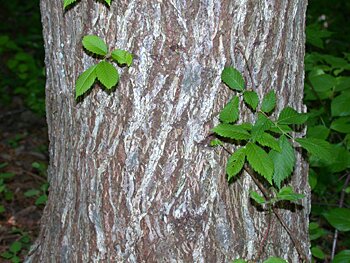BOTANICAL NAMES
Why they're important to learn

Chamomile, Matricaria recutita
But, think about it. Botanical names are very specific. Each name refers to only one plant. Especially when discussing herbs for medicinal or therapeutic use, knowing the botanical name is vital. It is a matter of safety.
Nicknames for plants are fun, descriptive and for many people easy to remember. They can evoke childhood memories, an admired plant in a friend's garden or conjure up the picture of the plant in your mind. But, they can cause confusion.


Both the flowers above are known as Bachelor's Buttons.... confusing, isn't it?
Learning some of the basics of the binomial system when referring to plants, especially herbs, also gives you very descriptive names, ways to recognize the plant and distinguish it from all others.

Carolus Linnaeus, who gave us Binomial Nomenclature so people speaking different native languages could communicate their scientific information with less confusion.
Picture courtesy of http://linnaeus.nrm.se/botany/fbo/welcome.html.en
Coriandrum sativum is cilantro, coriander, Chinese parsley. As you can see there are several common names for the herb, and by using the botanical name, everyone knows exactly what plant we're discussing.
The Genus describes the group to which all the like plants belong.Mentha is the genus to which all true mints belong. Each mint has its unique species name.
Spearmint is Mentha spicata
Peppermint is Mentha x piperata.
The "x" indicates that this species is a hybrid or cross between two other mints. In the case of peppermint, it is a cross between M. spicata and M. aquatica. When discussing a particular genus, it is common practice to use simply the first letter of the genus so long as it is clear which genus is being referenced. If you see the "x" in a botanical name, seeds from that plant will likely not come true to type. So, beware anyone selling Peppermint Seeds!
Look at this graphic to help you see how the categories narrow down the description to just one plant.How do you remember all those Latin names??
I'm often asked.
It's like learning any names. You just learn them. In many instances the botanical name actually gives you a clue as to the characteristics of the plant itself.
For example: if you see a plant with the species name "alba", that means the flower is white. Here is a short list of some other common colors found in the species name of various plants:
| argenteus- silver, silvery | niger- black |
| coccineus- scarlet | rubens- red |
| azureus- sky blue | caeruleus- blue, dark blue |
| purpureus- purple | violaceus- violet |
| aureus- gold | luteus-yellow |
| sempervirens- always green | viridis- green |
There are variations on the above words, but these are some very common ones.
Some of the words used for the species name indicate the shape of the leaf, fragrance or taste, markings or how the plant grows.
| alternatus- leaves grow in an alternate pattern on the stem | |
| cordatus- heart shaped | dentatus- toothed |
| erectus- upright | frutescens- shrubby |
| globosus- round | reptans- creeping |
| hirsutus- hairy | pubescens- downy |
| fulgens- shiny | concolor- evenly colored |
| variegatus- variegated | humilis- low growing |
| minor- small | scandens- climbing |
| tortuosus- meandering | verticalis- vertical |
Let's look at a few herb names and see if we can decipher the common name from the Botanical one.



Ulmus rubra- Ulmus is the genus for Elm, and rubra means red or reddish. Slippery Elm does have sort of reddish bark.

Anethum graveolens- Anethum is the genus for Dill, and graveolens refers to its strong fragrance.

Trifolium pratense- This time the Genus also tells us about the plant. Trifoliummeans 3-leaved, pratense is from the meadow. It's Red Clover!

Picture courtesy of http://www.uwyo.edu/plantsciences/uwplant/forages/legume/red-clover.html
Pronunciation is sometimes an obstacle to feeling comfortable with botanical names.
No one wants to embarrass themselves in front of another. Just remember that the names are not Latin, but rather 'latinized.' Most people pronounce latinized words as they speak their own language: just by sounding out the syllables.
For more on pronounciation of the botanical names of plants, please go here.
When you learn a little bit about the world of the botanical names of plants, you learn a lot about their characteristics, behavior, time of bloom, leaf markings and more. Don't be afraid of the botanical names of your plants. Learn to read them and know you're learning more about the herbs and plants we love.
For more on pronounciation of the botanical names of plants, please go here.
When you learn a little bit about the world of the botanical names of plants, you learn a lot about their characteristics, behavior, time of bloom, leaf markings and more. Don't be afraid of the botanical names of your plants. Learn to read them and know you're learning more about the herbs and plants we love.
For more information about the botanical names of plants, there is a book called A Gardener's Latin from the Editors of Country Living Gardener Magazine.


QUOTE FOR THE MONTH
A book is a version of the world. If you do not like it, ignore it; or offer your own version in return.
-Salman Rushdie, writer (b. 1947)
Until Next Time,
Good Growing to You,
Cindy Meredith, proprietor
The Herb Cottage
442 CR 233
Hallettsville, TX 77964
phone & fax: 979-562-2153, cell: 361-258-1192
email: cindy@theherbcottage.com
http://theherbcottage.com/
Visit Cindy's Blog at http://theherbcottage.blogspot.com/
Good Growing to You,
Cindy Meredith, proprietor
The Herb Cottage
442 CR 233
Hallettsville, TX 77964
phone & fax: 979-562-2153, cell: 361-258-1192
email: cindy@theherbcottage.com
http://theherbcottage.com/
Visit Cindy's Blog at http://theherbcottage.blogspot.com/










